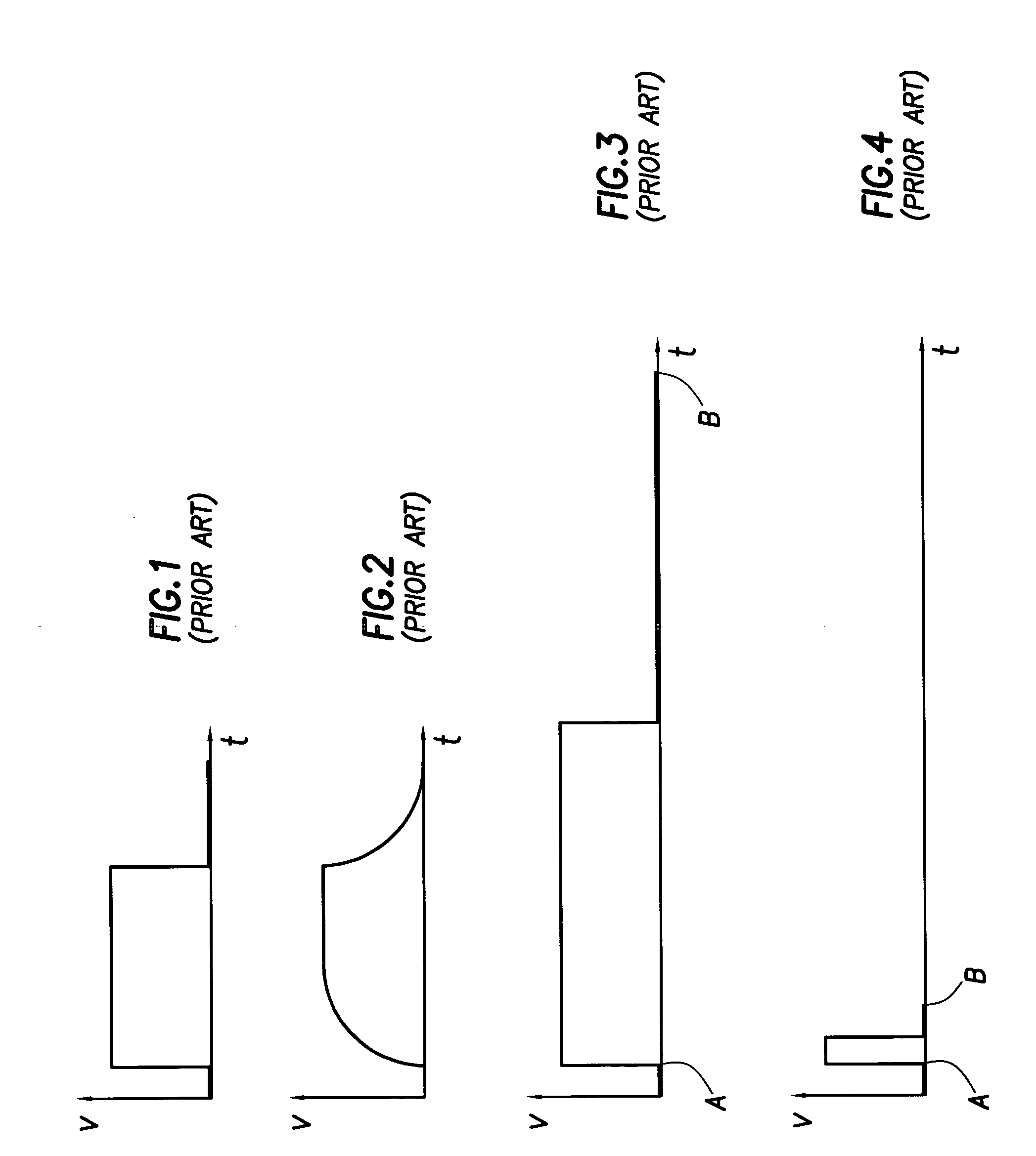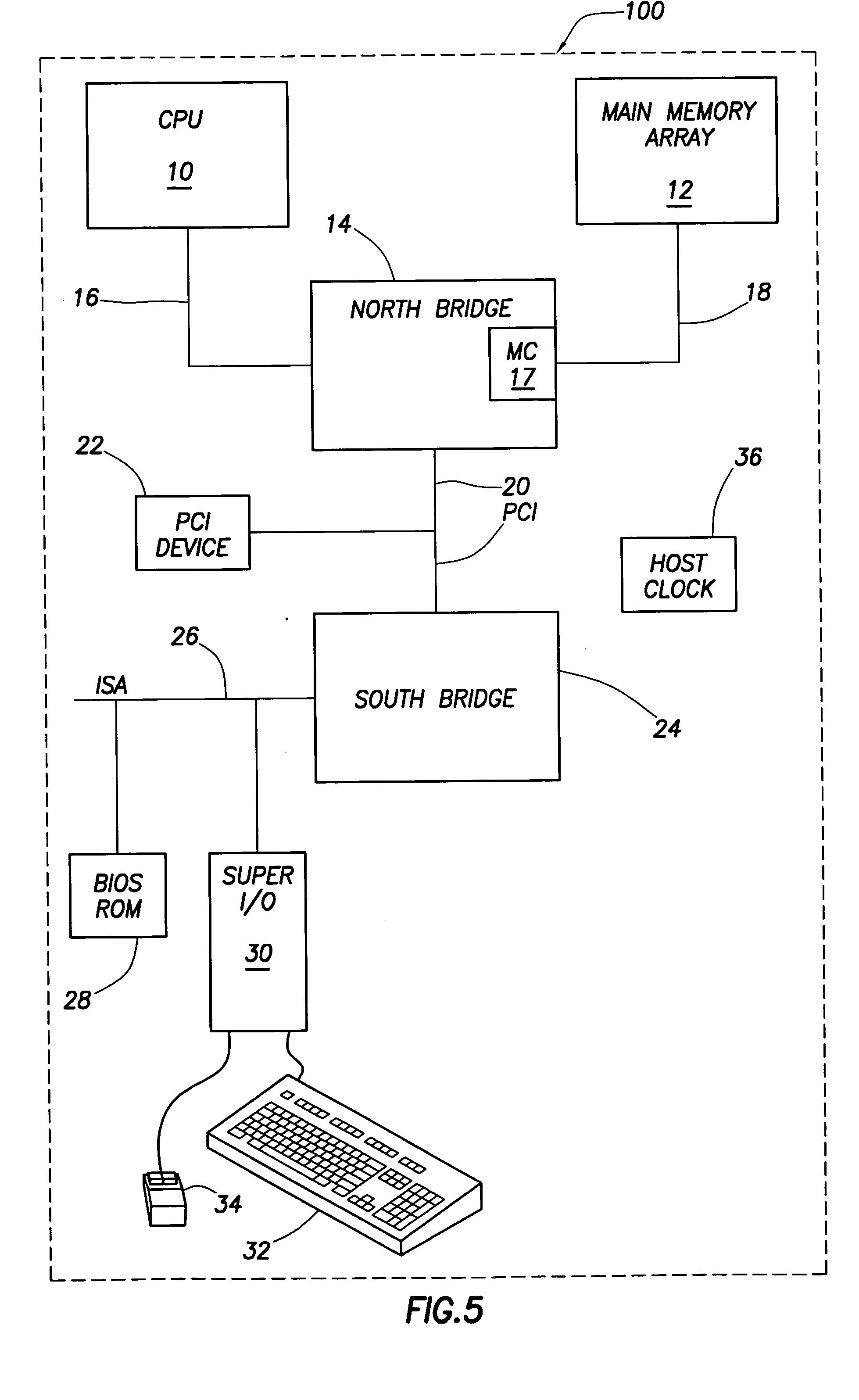Adaptive clock skew in a variably loaded memory bus
a memory bus and adaptive clock technology, applied in the direction of digital transmission, generating/distributing signals, instruments, etc., can solve the problems of inability to produce a waveform with such sharp voltage transitions, the microprocessor's data storage capacity is limited, and the transfer of information between the various components of the computer system becomes more complicated
- Summary
- Abstract
- Description
- Claims
- Application Information
AI Technical Summary
Benefits of technology
Problems solved by technology
Method used
Image
Examples
Embodiment Construction
[0031] Referring now to FIG. 5, computer system 100, in accordance with the preferred embodiment, preferably comprises a processor or CPU 10 coupled to a main memory array 12 through an integrated bridge logic device 14. As depicted in FIG. 2, the bridge logic device 14 is sometimes referred to as a “North bridge,” based generally upon its location within a computer system drawing. The CPU 10 preferably couples to the bridge logic 14 via a CPU bus 16, or the bridge logic 14 may be integrated into the CPU 10. The CPU 10 preferably comprises a Pentium Pentium III® microprocessor manufactured by Intel®. It should be understood, however, that other alternative types and brands of microprocessors could be employed. Further, an embodiment of computer system 100 may include multiple processors, with each processor coupled through the CPU bus 16 to the bridge logic unit 14. To increase memory capability, and memory bus bandwidth, multiple bridge logic units 14 may be used, each coupled to i...
PUM
 Login to view more
Login to view more Abstract
Description
Claims
Application Information
 Login to view more
Login to view more - R&D Engineer
- R&D Manager
- IP Professional
- Industry Leading Data Capabilities
- Powerful AI technology
- Patent DNA Extraction
Browse by: Latest US Patents, China's latest patents, Technical Efficacy Thesaurus, Application Domain, Technology Topic.
© 2024 PatSnap. All rights reserved.Legal|Privacy policy|Modern Slavery Act Transparency Statement|Sitemap



